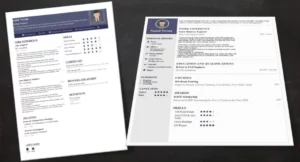Why does Concrete need Reinforcement? 6 Important Points
- By
- Pooja |
- November 14, 2020 |
- Civil Engineering, Bridge Engineering, Building/ Structure Engineering,

Table of Contents
Advantage of Steel Reinforcement?
Cold Worked Steel Reinforcement:
What are the Alternative Systems of Steel Reinforcement?
You must have seen the use of steel reinforcement in concrete structures, but do you know why does concrete need reinforcement? Please read this interesting blog for details.
What is Concrete?
Concrete is a mix of cement, aggregate and water in the desired ratio, and once settled it becomes a hard material and performs very well against compressive loading. But concrete is very weak against tensile loading. If you ever notice cracks or breaks in concrete, it only happens due to its weak tensile strength.
As a result, Steel Reinforcement is used with concrete to make a unit like Slab, beam, column, etc to performs well against all types of loading. Steel Reinforcement engrosses tensile load and makes the unit robust enough to bear the tensile load, compressive load, sheer load, torque, etc very efficiently.
What is Steel Reinforcement?
Steel Reinforcements are made of Steel Bars of varying diameters and they are placed like mesh within the formwork and then concrete is poured into the formwork. For example, when reinforcement mesh is placed into a concrete slab, after settlement, it significantly enhances the tensile strength and it distributes the uneven live load uniformly, as a result, the whole slab behaves like one unit.
Advantage of Steel Reinforcement?
Steel Reinforcement bars are easy to grip, transport, customise, weld, etc if comparing it with any other material. Steel reinforcement lasts for a very long time without any severe corrosion. Steel Reinforcement Bars helps the concrete structure to bear the Tensile load, as a result, the thickness of the structure can be significantly optimised and reduce the cost of construction.
In the case of the removal of concrete structure, steel reinforcement can be reused if find it is suitable for other purposes.
Importance of Reinforcement?
When Reinforcement Bars are used in a concrete structure, it enhances the tensile strength of the structure, it prevents cracking and it ensures the load are distributed uniformly. Steel mesh is used in the concrete slab, a few millimetres above the bottom of the slab.
High ductile reinforcement bars are not recommended in the pavement slabs for ground beams, because it is not expected to receive a significant tensile load.
Read More:
Types of steel Reinforcement?
Hot Rolled Deformed Bars:
Hot rolling of bars is carried out in the steel plant and surface distortion is provided so that it can make a strong bond with concrete.
Cold Worked Steel Reinforcement:
Cold working of steel means twisting or winding of hot-rolled bars. This removes the Plastic Phase of the steel bar and provides adequate control and strength to the bars. When the plastic stage is removed from the bar, it reduces the ductile strength of the bar.
Mild Steel Plain bars:
Mild Steel Plain Bars come with a plain surface and no distortion, as a result, it does not bond well with concrete. For this reason, it is not recommended to use where high tensile structure strength is required. Plain bars are normally used in minor project and it is recommended that if plain bars are used, a hook or similar arrangement are provided at both ends of the steel bar to enhance the grip.
Prestressed Steel Bars:
These steel bars are made of numerous small size strands and each strand is made of numerous wires, as a result, these bars come with very high tensile strength. To understand further details of Prestressing process, please read this blog:
What are the Alternative Systems of Steel Reinforcement?
Fibre
Polypropylene or polyester are the commonly used fibre reinforcement with the concrete mix to make a robust structure unit. The use of steel fibre improves the impact bearing capacity, making it a tough structure. It reduces the permeability of the structure and also provides a better finished surface.
It is very important to note that Fibre is not a replacement for steel. It is recommended to use it along with steel bars. Fibres reinforcement supports the cement mix by reducing the separation of the fine particles and enhancing the strength of the mix. Nowadays, the use of fibre in a high-end concrete mix plant is a very common practice, and it certainly provides a very competitive low-cost product.
In many decorative concrete structure surfaces, the use of fibre content plays a very important role to provide a very high-quality finished product.
Type of Fibres
Steel Fibres:
Steel fibre is commonly used in the construction of the ground-level slab of large commercial development or warehouse development. It is used by mixing it with concrete mix along with a substantial amount of plasticiser to offer the “ease of concrete mix placement”.
The use of Steel Fibre in the concrete mix makes the overall construction cost marginally higher, but it improves the performance of the unit and provides a high-quality finishing, therefore it is recommended to use it in high-end projects.
Synthetic Fibres:
Synthetic Fibres are normally made of plastic and they are way cheaper than Steel Fibre. Strength wise they are not as good as Steel Fibre, so it is not recommended for the larger project. In small projects like schools, small office units or small warehouses, synthetic fibre can be used along with the concrete mix.
The key advantage of using fibre (whether it's synthetic fibre or steel fibre) is that it improves the concrete mix strength in all directions. This means whether its compressive load, tensile load, torque, shear load, etc, fibre helps the concrete mix to resist the load coming from any direction.
Hope this helps you understand the real use of steel reinforcement in a concrete structure, how the structures are benefited from this, what are their types and lastly how Fibre can improve the concrete mix performance even further. Please feel free to comment and share your views.
Read More:
-
What is the Function of Bridge Foundation or Pier and its Types? 5 Important Points
-
What is Honeycombing of Concrete? Prevention and Repair: 8 Important Points
-
Pre-stressed Concrete, Pre-tensioning and Post-tensioning: 3 Important Points
Admin, gcelab.com Please see our Pillar Post to know why we founded gcelab.com.

Pooja
Founder at gcelab.com, Pooja is an Entrepreneur unlocking human potential. Working in the Principles of Lean Start-up, Pooja believes in Transparency and User Happiness the most. Pooja’s background in teaching gives her a sophisticated grasp on even the most tedious aspect of course building. She is passionate about people who believe that good is not enough.



